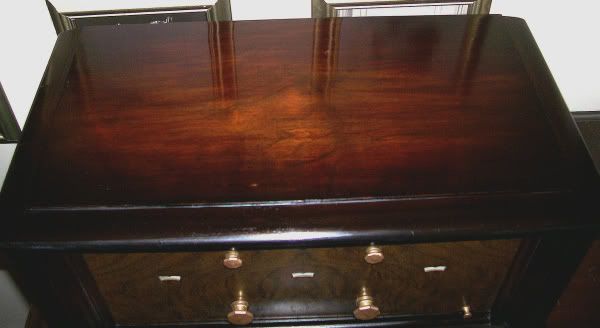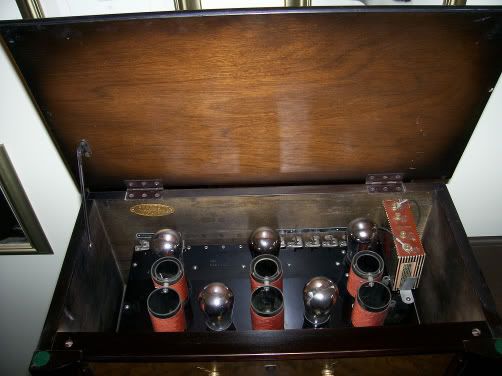Starkton wrote:Uncle Vanya wrote:The buyer subsequently sold the unit on a well-known auction site as an extrordinarly well-preserved, working original example (for more than twice what he paid).
That's fraud, pure and simple, but the vendor must not fear to be unmasked, when I consider the knowledge of some chance buyers. Because, on one hand, this speaks for the quality of your work, which is very good indeed, judging from the images. But on the other hand, objects time-savingly restored with not contemporary methods or materials are also sold at high prices. Many collectors are amateurs when it comes to the question which craftsmanship would be appropriate on a 100 year old technical object. It is not enough to know which reproducer is correct on your phonograph.
Well, this said, the re-seller, who is not personally known to me, doubtless knew nothing of the unit save its appearance when he purchased it. This was an ordinary auction situation. Little to nothing is known of the history of an item, save the visual cues offered. My personal opinion is that a properly restored item, and when I say
properly restored I mean restored entirely with the use of materials and techniques which were used by the original maker, is very little if at all different from the perfectly preserved example.
I did not mark my work as restored, either, and the friend for whom I did the work thought nothing of simply offering it under ordinary auction terms (as he told me in a telephone call about a half-hour ago) as just what it was, a really nice looking, great performing, complete set. He told me that he never really thought of mentioning restoration in this listing, for the set was as far as he was concerned all that it appeared to be.
Should a restoration such as this be marred by the sort of indellible brand that we all believe should be appled to reproduced large parts or cabinets? How does one ethically deal with a truly excellent restoration thirty or forty years down the road? Frankly I tend to be of the opinion that if the work is intellegently, expertly and properly done, with no obvious intention to deceive, that no special identification is necessary. Should we all sign our work? Or should we rather use improper materials and indifferent workmanship so that restoration is painfully obvious to the tyro?
None of this was terribly important back when I began restoring these items in the early 1970's, for these units were then of so little value, and the "Keno Brothers" mantra "That chest-on-chest would have been worth a hundred thousand dollars had it not been refinished, but as is it is worth six" had not entered intonpopular consiousness, but as the interest in the better stuff increases, this question begins to assume troubling proportions.
How should we ethically deal with the better restoration? This is a thorny question which I had not much considered in the past. I have always indellibly marked large items such as cabinets, base moulding, or large castings, but should a replaced gear be noted? A replaced corner-column? A re-would transformer? A repaired finish? Touched-up plating? A re-stuffed condneser? Where then do we draw the line?
Should I have taken a wood-burning pen to the baseboard of that radio and signed it with my name and the date? Should my friend have included a notice regarding the restoration? I do know that in an auction setting such notice will often severely depress the realized price of the unit, while at the same time greatly increasing the potential profit margin to its purchaser, who may (and will) discard such notice if it is convenient for him to do so.
Are we to maintain that all attempts at restoration indelibly degrade these objects that we enjoy, or should we only object to
bad restoration?
This is a dificult question, and one that we as collectors and sometime restorers should always keep in mind.




